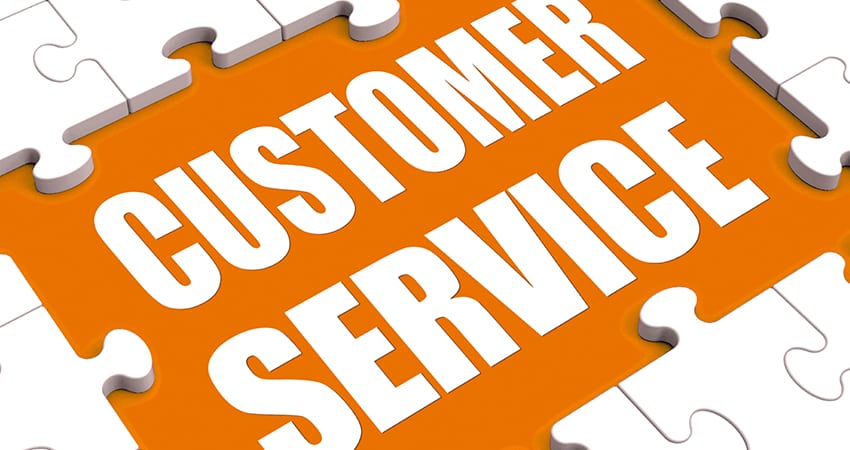Retailers of all shapes and sizes are struggling to survive in the era of Amazon. Headlines echo very clear distress signals in the form of missed revenue targets and mass shutterings of physical stores, all trying to gain a firmer foot in the uphill battle against the ecommerce elephant in the room – Amazon. Yet no type of business is struggling harder than mid-market brands and ecommerce retailers. While this can be attributed to many factors, it’s in large part due to changes in consumers’ ecommerce expectations, driven by Amazon’s investments.
Two pain points in particular – scalability and profitability – are becoming increasingly more necessary to achieve a competitive advantage over Amazon. In addition to these two factors, ecommerce retailers are faced with a myriad of issues – from meeting customer expectations on inventory, shipping and delivery costs, to building customer relationships that result in return buyers. All of these problems, however, aren’t unique to mid-market brands and retailers. Larger online retailers are suffering from many of the same complex problems. The crucial difference is the mid-market lacks the resources the bigger players have to overcome these challenges.
Essentially, it comes down to a few key areas that retailers are falling short of that explain why Amazon is capturing nearly half of all dollars spent online.
The Fate of an Inadequate Ability to Scale
One of the least discussed shortcomings among eCommerce retailers, yet the most critical, is the ability to scale. It’s arguably one of the only variables that matters in the ecommerce equation right now. Many retailers are faced with building an infrastructure that’s capable of competing with Amazon and adaptable enough to handle the surges of peak while delivering a great customer experience all year. This starts with figuring out how to adequately scale up in order to deliver against the precedent Amazon has set in redefining consumer expectations.
Retailers Must See the Bigger Picture
Many retailers fail to realize that there are nearly two dozen complex steps between delivering an exceptional end-to-end customer experience. This includes the moving parts on the back end that must align in sequence from when a consumer clicks checkout to when an item arrives at a consumer’s door. While there is no one-size-fits-all approach that can be applied, retailers can implement certain strategies to gain a competitive advantage and differentiate in a way that results in return customers. For instance, brands and retailers must perform stress tests on the scale and capacity of a complex ecosystem that includes every point in the purchase process, from order management, payment, tax collection, fraud detection, picking and packing, transportation, etc. Vital spikes like peak holiday season need to be factored in, otherwise businesses will get burned out by not being able to deliver when demand is at its highest. Having this infrastructure in place also is critical to delivering a best-in-class customer experience.
It’s also no secret that today’s consumers are in control and they want it their way. Retailers must be equipped with a viable way of fulfilling orders that are tailored to each individual’s desires and needs. This can include everything from engraving, gift wrapping, and curated beauty packages. And while few eCommerce retailers are doing this today, brands should also consider offering a wide range of delivery options to minimize the hassle of returns. This could include next-day delivery, changing delivery post-order, in-store returns and customized delivery dates.
Don’t Try to Beat Amazon at Its Own Game
At the end of the day, retailers shouldn’t try to beat Amazon at its own game because they will lose. There are, however, a few tactics ecommerce retailers can consider to profitably thrive in this new era, such as:
- Embrace showrooming: While it may seem counterintuitive, consumers love to browse. First get customers in the door, then keep them in with an immersive showcase experience that takes them all the way through the checkout line.
- Offer same-day buy online, pick-up in store: This is one of the few ways to beat Amazon Prime’s two-day guarantee.
- Match pricing: It’s now necessary for retailers to match prices, plus it’s likely to incentivize repeat visits.
- Partner with other companies: With the right partners, retailers can deliver a better synchronized customer experience at scale, while generating increases in the bottom line.
Overall, the crucial battleground to win on is experience. This boils down to three key areas – choice, convenience and control. Consumers want to be a part of every major decision in the purchase process, including what they want, when they want it, where they get it, how it gets there and when it gets there.
The silver lining to all of this is the customer will keep on winning in a world that’s friction-free. But brands must ensure they take advantage of the situation and adopt the right strategies to take a competitive, profitable approach that ensures a frictionless experience at every touchpoint.

